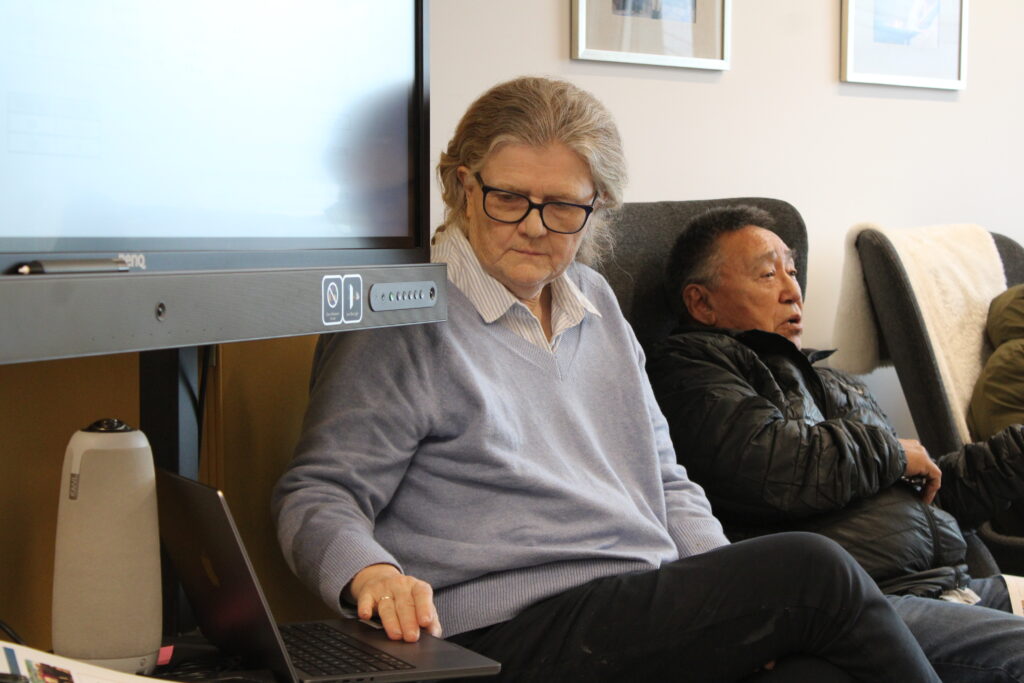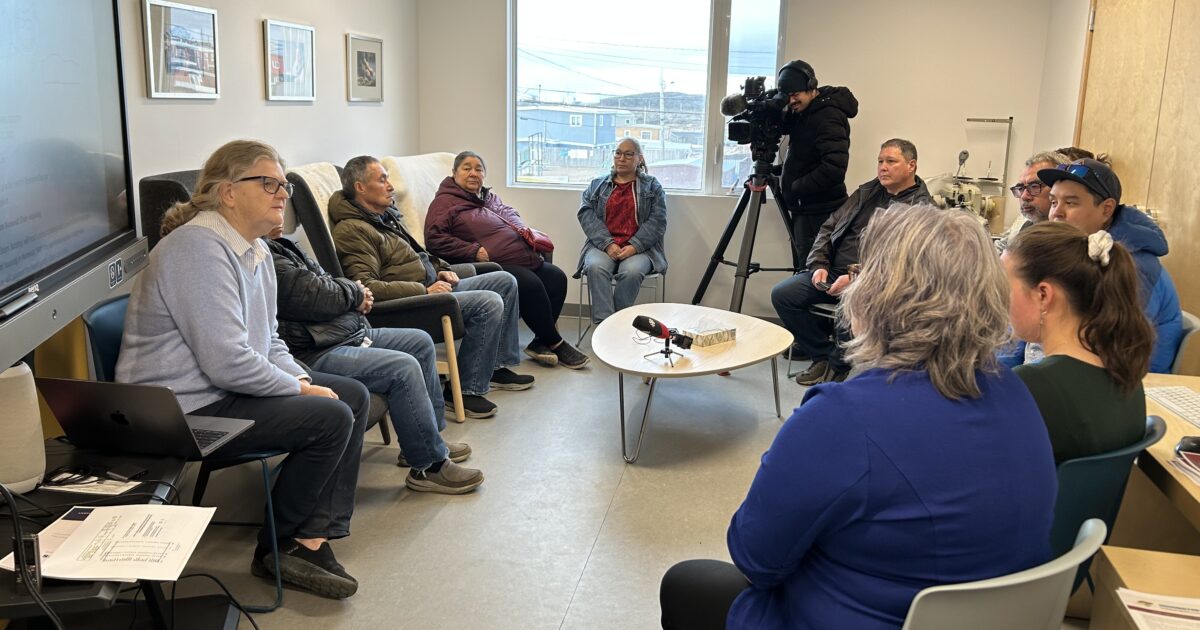Iqaluit Elders Society says GN should change focus of its strategy so more elders live close to home
Construction is expected to start next year on a $60-million apartment complex in Iqaluit to ease what one organizer calls an elders “housing crisis.”

Anne Crawford, project co-ordinator with Pairijiit Tigummiaqtikkut, says relocating elders to distant long-term facilities is “robbing” communities of elders’ knowledge. (Photo by Arty Sarkisian)
“We’ve gotta rethink institutional care,” said Anne Crawford, project co-ordinator with Pairijiit Tigummiaqtikkut or the Iqaluit Elders Society, which has been the proponent since 2022.
She spoke Wednesday at an event organized by the elders society calling on the Government of Nunavut to take a new direction on elder housing. It was held at the Qaujigiartiit Health Research Centre, with about a dozen people in attendance including some candidates running in Monday’s territorial election.
The plan is to construct the apartment building for elders on a triangle of land between Ataani Lane, Kuugalaaq Street and Nipisa Street. It’s set to have approximately 45 units plus gathering areas, sewing space, a pharmacy, daycare, small chapel and its own power generator.
Work is expected to be completed in 2027, project consultant Jimmy Flaherty said. Funding comes from Nunavut Tunngavik Inc. and the Canadian Northern Economic Development Agency.
Currently, about 1,700 Nunavummiut are aged 65 or older, a report completed in January by the elders society said.
Of that group, 29 per cent live in homes that need major repairs — a rate six times higher than in the rest of Canada — and 31 per cent live in “unsuitable conditions” which is 11 times higher than the national rate.
Crawford called the GN’s plan to build three elders’ facilities in Rankin Inlet, Iqaluit and Cambridge Bay a “one-size-fits-all solution.”
The Iqaluit Elders Society has found that 87 per cent of the government’s “elder-focused funding” goes toward paying for institutional care, both in-territory as well as at places like Embassy West Senior Living in Ottawa which serves only 2.7 per cent of Nunavummiut aged 65 and older.
Those long-term care facilities are primarily geared to elders with severe disabilities and who require around-the-clock care, while “ignoring” elders who are able to support themselves, Crawford said.
“And they’re so expensive, like millions of dollars” to operate because of the high level of care offered, she said of those facilities.
The recently-opened $59.4-million 24-bed long-term care facility in Rankin Inlet has an annual operating budget of about $15 million, or about $625,000 per resident. The facility is part of the Nunavut government’s plan announced in 2019 to offer 156 extended-care beds to elders in the territory by 2030 — 24 beds each in the Kivalliq and Kitikmeot Regions and 108 beds for Iqaluit.
The elders society is proposing to keep the existing funding at the Rankin Inlet facility and Embassy West but redirect an estimated $330 million in capital funding and $82.5 million in operating funding from the facilities planned for Cambridge Bay and Iqaluit to instead build housing units for elders in all of Nunavut’s 25 communities.
Such a plan could result in 584 elders’ housing units being built across Nunavut, instead of the 132 long-term care beds currently designated to be opened in Iqaluit and Cambridge Bay, the report stated.
That would also help free up public housing units across the territory to provide more housing for younger people and families.
Crawford said the elders society hopes that, over time, it would lead to more elders being able to live close to home instead of having to relocate south or to regional centres.
“Staying in the community will keep them healthy,” she said “And taking elders away is also robbing the communities of their knowledge.”




